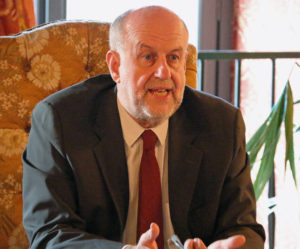“COP21 ended successfully with the adoption by consensus of an ambitious first universal agreement to address climate change.
“The Paris Agreement marks an historic turning point in the UN negotiations on climate. The 1992 United Nations Framework Convention on Climate Change (UNFCCC) and the negotiations that followed differentiated countries into two classifications: the industrialised countries known as "Annex 1" and developing countries known as "non-Annex 1". Only the former were subject to quantified commitments to reduce their greenhouse gas emissions due to their historical responsibility in global warming. The appearance of emerging markets, where economic growth has been accompanied by a sharp increase in GHG emissions, has challenged this distinction.
“The Paris Agreement reflects this development, based on a new process which commits all parties to submit an intended declaration (a Nationally Determined Contribution or NDC) on the emissions trajectory they believe they can adopt. This "bottom up" process, as opposed to the "top down" process of Kyoto is undoubtedly the most decisive and productive element of the Paris Agreement. Although the Agreement reconfirms the principle of common but differentiated responsibilities, all countries now have obligations and are subject to the same system, but with differences in the timetable for implementation.
“The Paris Agreement begins a dynamic to strengthen the ambition, not only by referring to the symbolic and political objective to limit global warming to 1.5°C, but also by establishing a five-yearly mechanism for the upward revision of the NDC. In terms of the financing provided to developing countries, a new quantitative aid objective of over $ 100 billion/year should be set before 2025 for the post-2025 period.
“The agreement also provides a strengthened framework of transparency to monitor, assess and verify the performance of the parties in respect of their nationally-established reduction commitments. A "global stocktake" process, the first review in 2023 and every five years thereafter, will be used to guide the Parties in updating and strengthening their national measures.
“The role of non-State actors is now fully recognised by the United Nations process; this is undeniably one of the great successes of COP21. Although they are not signatories to the Paris Agreement, non-State actors (companies, cities and territories, etc.) are invited to scale up their efforts to reduce emissions and report these through the UN's NAZCA portal (http://climateaction.unfccc.int/), a digital platform that lists the initiatives taken by civil society.
“At this stage, no verification mechanism is planned for the commitments of non-State actors whose involvement is fundamental in being able to achieve reduction objectives. In this regard, ADEME has developed the ACT (Assessing low-Carbon Transition) methodology to measure companies' commitment to reducing their greenhouse gas emissions. This project, conducted in partnership with the CDP (Carbon Disclosure Project), will analyse companies' published data and assess whether it is in line with their commitments.
“ACT will therefore recognise those companies making commitments consistent with the overall objective of 2°C. This project is currently being trialled in the Electric Utilities, Auto manufacturers and the Retail sector. Around fifteen large businesses have volunteered. The objective is to set up an operational mechanism for COP22.
“Thus, there are two main achievements that allow the Paris Agreement to be described as a success: the adoption of a new, universal and decentralized process that is used to engage all 195 countries in curbing greenhouse gas emissions and the recognition of non-State actors' involvement in the process. Regarding these two elements and the hopes that could reasonably have been formulated before the Conference, this represents real progress.
“With the Paris Agreement a momentum has started. It is an essential starting point towards enhanced action by all States in the face of climate change. It sets an ambitious course, but the means for achieving it and making this Agreement a lasting reality, are still to be determined.
“For the process to succeed, much depends on civil society, whose increasing power and strength have become indisputable and above all, essential. Indeed, the commitments of these actors will come to support and increase the States' commitments and enable us to achieve the most ambitious trajectory possible!”






